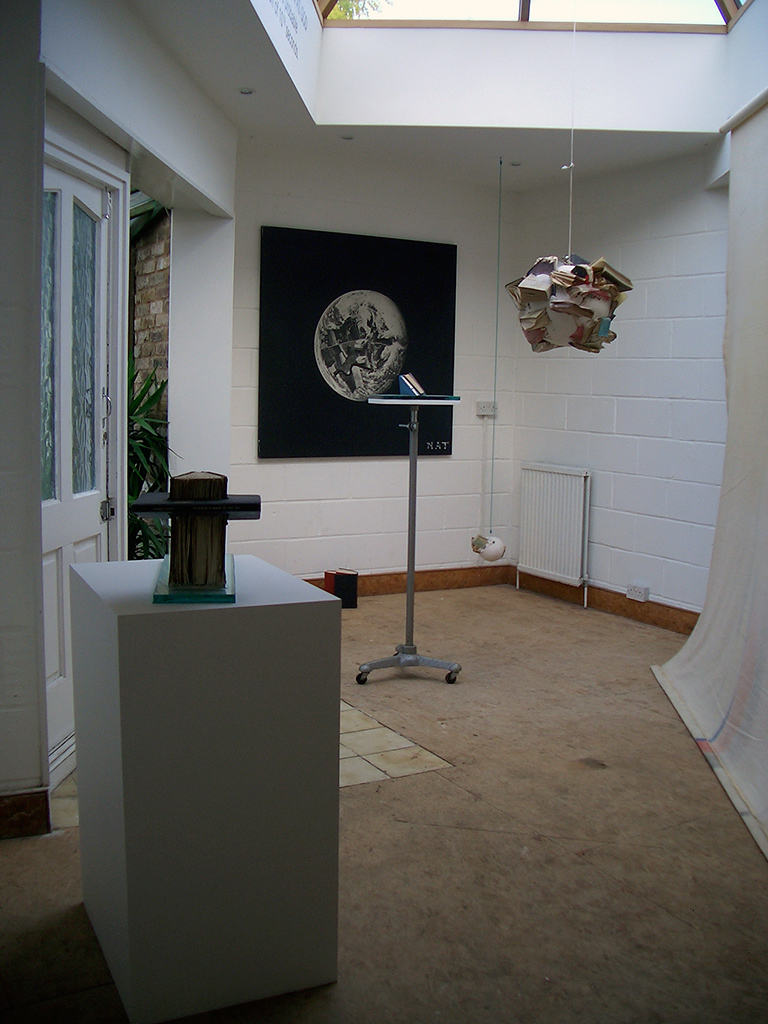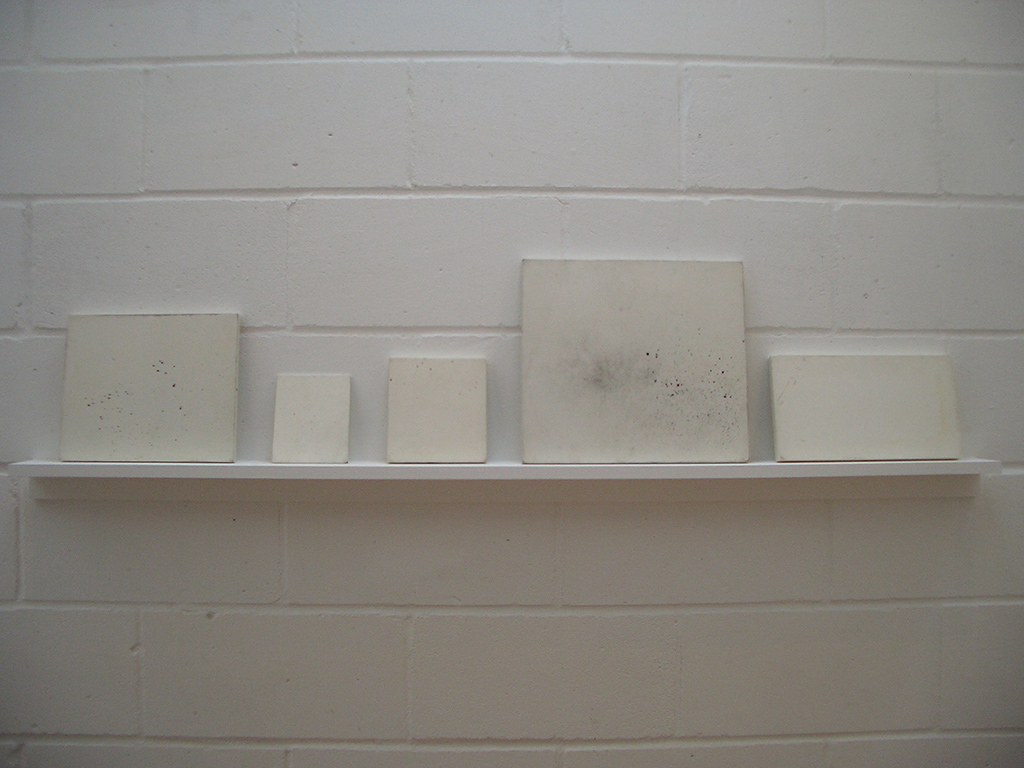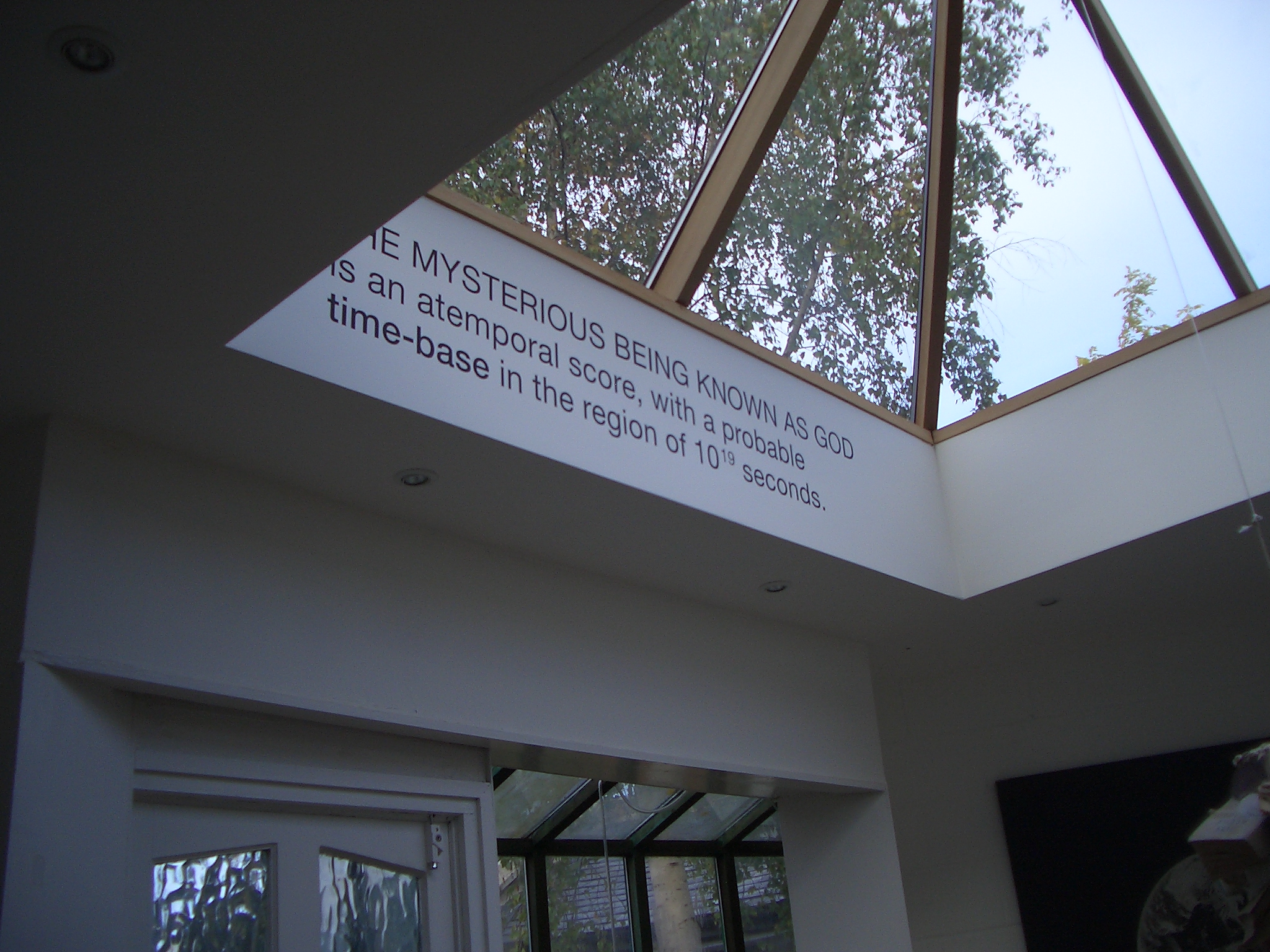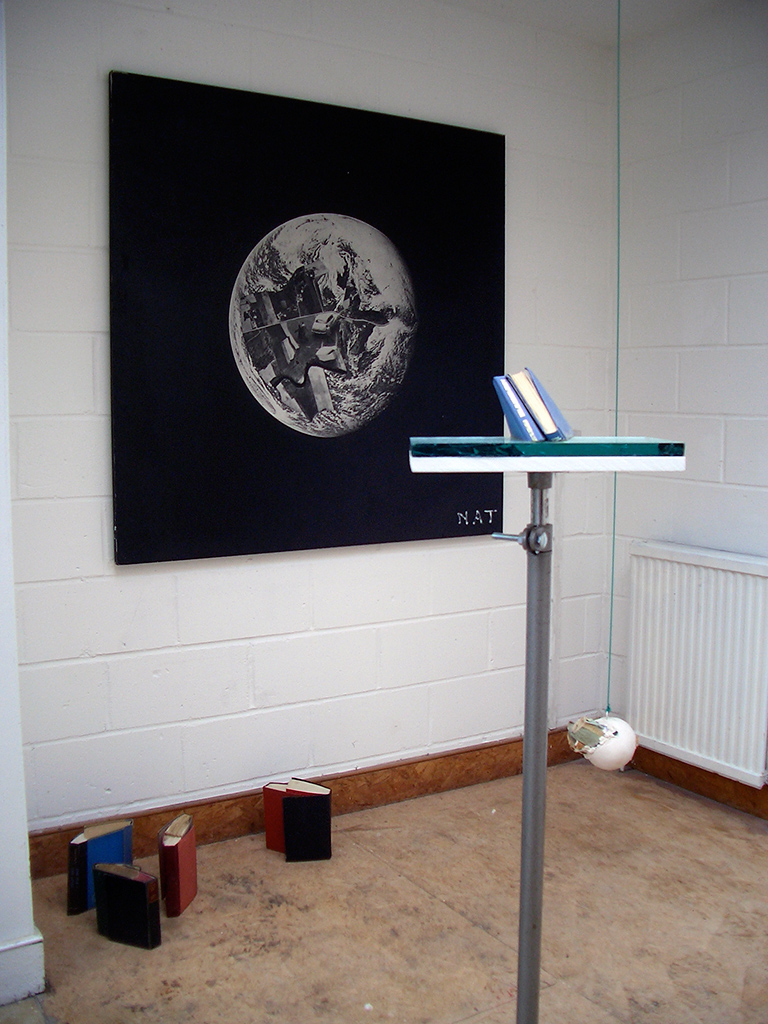THE PRESENT MOMENT/THE WHOLE EVENT: PART ONE
15 October–22 November 2009
Works on the time-base spectrum. A solo show followed by a group show, and some recurrent events

PART ONE*
John Latham (roller/noits/collages/two-sided paintings/book sculptures)
"Latham adopted the roller format because it enabled him to represent time as a passing effect and time as a state which does not change, to encapsulate the relationship between the present moment and a whole event (a life or a universe): if the rectangle of canvas represents a whole event, then the narrow strip of canvas exposed along the roller represents the present moment. When the canvas is rolled up, the whole event is still there but hidden from view."
(John A. Walker, 'John Latham, The Incidental Person', Middlesex University Press, 1994)
One of Latham's large, untitled roller paintings (right) is both backdrop and framework for the exhibition, The Present Moment/The Whole Event. The paintings, made between 1963-67, were an attempt to physically embody time in painting.
In these roller paintings (also known as Blind Works), Latham employed his familiar technique of painting with a spray gun, but this time he produced undulating strips of colour by masking off areas of the canvas before activating the gun. The intensity of colour in the strips is most towards the centre of the gun's aim, and least at its outer limits, leaving large parts of the unprimed canvas bare. Latham used the musical analogy of the coloured bands as a 'score' of the universe.
One edge of the rectangle of canvas is fixed to a wooden dowel or metal cylinder and wrapped around it. The rest of the canvas hangs loose from the back of the cylinder so that what would ordinarily be understood as the 'front' of the painting - where the ink sits on the surface - is actually invisible most of the time. What is visible on the 'wrong' side are the shadowy traces created by the ink that has been drawn through the canvas to the other side. Latham talked about the distinction between "what you see, and what actually happened" - the 'spectator event' and the 'make event' that preceded it.
When the roller is motorised, the cylinder rotates so that the canvas rises and falls, more or less of it being rolled around the cylinder. The length and breadth of the canvas represents the duration of an entire universe. The narrow strip of painted canvas visible as it journeys over the front of the cylinder represents time passing. Two types of time. The present moment and the whole event.
"By rolling the painting over a barrel one finds the painting revealed in the way we experience a 'now'. The 'then' and the 'to come' are not manifest. But with this way of presenting a work the 'always there' is actually there, physically."
(John Latham, statement in 'State of Mind: John Latham', Dusseldorf, Stadtische Kunsthalle, 1975)
Part One is a solo exhibition of work by John Latham. The Roller will remain for Part Two, but the other works will be replaced with the work of other artists: the same score performed by different players.
* In the prologue to his two-part essay 'A New Refutation of Time' (published in 1947) Jorge Luis Borges explains the structure of his text.
"The first article (A) was written in 1944 and appeared in number 115 of the review Sur; the second, of 1946, is a reworking of the first. Deliberately I did not make the two into one, understanding that the reading of two analogous texts might facilitate the comprehension of an indocile subject."

John Latham Cluster no. 2 from Cluster of Eleven, (1992) Plaster, fragments of books, rubber, metal fittings, wire, wheel. 30 x 32 x 27 cm. Photo: Courtesy Lisson Gallery, London.



John Latham, Cluster no. 11 from Cluster of Eleven (1992) Plaster, fragments of books. 44 x 54 x 50 cm. Photo: Courtesy Lisson Gallery, London.

